Why is my St. Augustine grass turning yellow, what do I need to do?
In some regions of the country, the St. Augustine grass is in great demand when equipping lawns. It is quite easy to care for it, while the coating is lush. The neighbors will be jealous of your green lawn. However, many are interested in why is my St. Augustine grass turning yellow. More about St. Augustine grass you can read in this article.
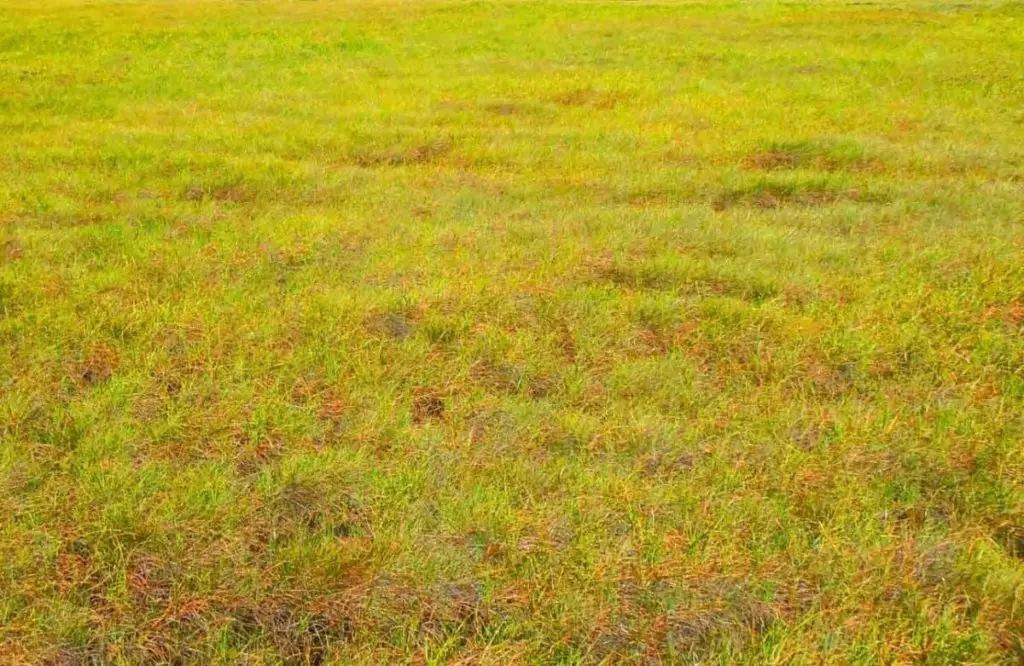
Lack of water
If you are wondering why is my St. Augustine grass turning yellow, pay attention to the quality of watering. The grass prefers to grow with constant moisture, especially if the vegetative process occurs.
If the St. Augustine grass encounters drought, the grass wilt and turns yellow. Especially if no more than a year has passed since sowing.
How to solve a problem?
Many people ask, how do I fix yellow St. Augustine grass? Once you identify the problem, let the soil dry out. Then water weekly to a depth of 1 inch. However, pay special attention to the amount of precipitation in your area. If the rains are frequent and plentiful, watering is rare.
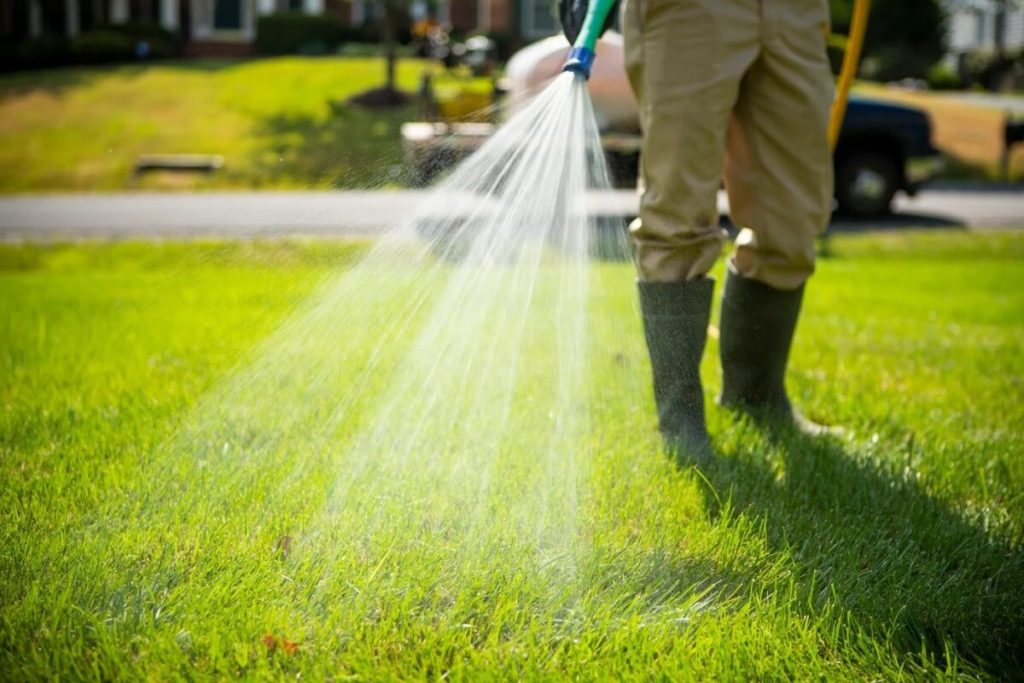
Overwatering the Augustine lawns. Can it cause a root rot?
If St. Augustine grass is watered abundantly, root rot can develop. If there is starting root rot, the leaves no longer are bluish-green and acquire a yellow pigment.
How to solve a problem?
A common question is, how do I fix yellow grass and root rot? First, you need to drain the soil well. Then leave it to dry completely. You can check the top layer of soil using your finger. If the earth sticks to it abundantly, then watering is not required.
Insufficient amount of nitrogen fertilizer
It is important to understand that a lack or excess of nitrogen fertilizer can harm the St. Augustine grass. Nitrogen is sold in all fertilizer stores and is easy to find. Its main purpose is to increase the growth of leaf plates and roots. At the same time, the shade and splendor are improved.
A common question is, why is my Saint Augustine turning yellow? If there is nitrogen deficiency, the Augustine grass turns yellow. First, you need to check the level of nitrogen in the soil of the warm-season grass.
If it is low, you need to apply nitrogen fertilizers, which act quickly. It can be ammonia or urea. It is recommended to apply fertilizers only in the warm season.
Often the lack of nitrogen is observed due to leaching. Often this is faced by people in regions where sandy soil prevails, or it often rains heavily. The water flushes out the nitrogen so it won’t reach the root system.
If your area experiences heavy rainfall, it is recommended to use fertilizers that release slowly or do not dissolve in water. This prevents leaching.
Even if you apply enough nitrogen, Augustine grass may not take it well. As a result, there will be a shortage. Pay special attention to the weather in your area. Only in this way you can understand when and what fertilizers to use.
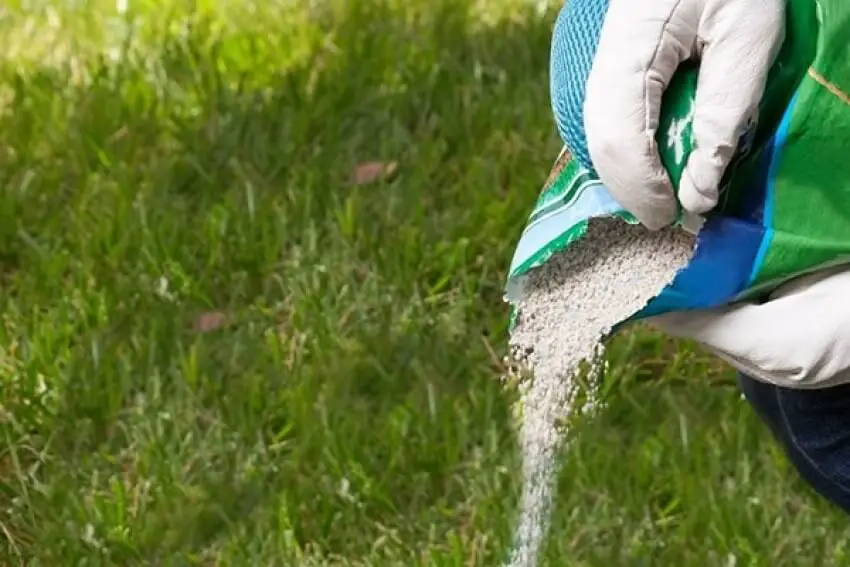
How to solve a problem?
Quite often you can hear the question, what type of fertilizer is best for St. Augustine grass? Try to fertilize lawns with quality fertilizers, which are high in nitrogen.
This solves the problem of yellowing grass. To notice the first positive effect, several procedures are required.
Iron deficiency of St. Augustine grass
Often the St. Augustine grass turns yellow if it lacks iron. This may be due to the excess phosphorus in the soil, or high acidity.
St. Augustine is a turf warm season grass. Therefore, the grass needs iron, due to which photosynthesis occurs, and the formation of chlorophyll. Nitrogen decomposes under the influence of iron. On average, a lawn needs 30 to 100 parts per million (ppm) of iron.
If the soil contains a lot of phosphorus, the plants absorb iron worse. Given that the grass has a shallow root system. That is why it is difficult to absorb nutrients that are too deep.
When you fertilize, try to use substances that contain little phosphorus. If possible, it should be completely abandoned.
In its natural environment, St. Augustine grass prefers to grow in soil where the acidity level is between 6 and 6.5. If the rates increase, it is more difficult for the crop to absorb iron from the soil. Therefore, the grass begins the process of iron chlorosis – yellowing.
Checking indicators
To determine that a plant is deficient in iron, it is necessary to follow the patterns on the leaves that have been affected. If the chlorosis was due to an iron deficiency, mottled patterns appear on the turf. In this case, the defeat has the young leaves and growths.
You can test the soil to see if it has enough iron to supply all plants. To do this, you need to take several soil samples and give them to the laboratory. You can understand if you have slightly acidic soil, as well as many other important parameters.

Laboratory studies are quite useful. They help to understand which fertilizers are better to use in the future.
How to solve a problem?
To solve the problem, it is recommended to use liquid iron, which is suitable for grass. You can also use supplements that contain chelated iron. However, it is important to note that their cost is quite expensive.
Too much fertilizer
Many gardeners think that applying a lot of fertilizer grows beautiful grass. However, exceeding the permissible norms is fraught with the yellowing of the grass.
It is recommended to feed St. Augustine grass at intervals of 6-8 weeks, and only in the warm season. Because too much fertilizer can cause root rot and damage to the structure of the grass.
How to solve a problem?
Do not fertilize the grass in autumn and winter. In spring and summer, it is important to monitor the number of substances introduced. Stick to the correct spacing so that the grass has time to recover.
Fungal infections and diseases of St. Augustine grass
Why does the grass turn yellow? If yellow-brown spots appear on the leaf blades, this may be a fungal disease. Subsequently, the grass completely turns yellow. The owner of lawns encounters this if there is a lot of rainfall in summer. Especially if the grass was planted in the shade.
All grasses that are planted for the lawn are susceptible to this disease. If the grass has been infested, it takes the shape of a doughnut in the spring. The layers are green on the inside and brown on the outside. Similar patterns indicate the restoration of the grass. After all, new leaves grow in the center.
You may also be interested in: Menards Fertilizer Vs Scotts (Which is the Superior Choice).
Survey
To diagnose fungal diseases, you need to check the sheath of the leaves. The disease is indicated by rotten leaf plates. Stems that have acquired a brown tint easily come off.
To prevent infection, reduce the amount of nitrogen in early spring or late autumn. After all, such a fertilizer stimulates the growth of new green stems that are already infected with fungal infections.
Prevention
To prevent fungal infections, fungicides should be used in late autumn. The main thing is to bring them in until the grass starts to turn green. If the disease was detected in the spring, the use of fungicides is also required.
How to solve a problem?
If signs of infection have already been detected, you need to dig up dead grass. Then you need to remove the top layers of soil before you re-seed the lawn.
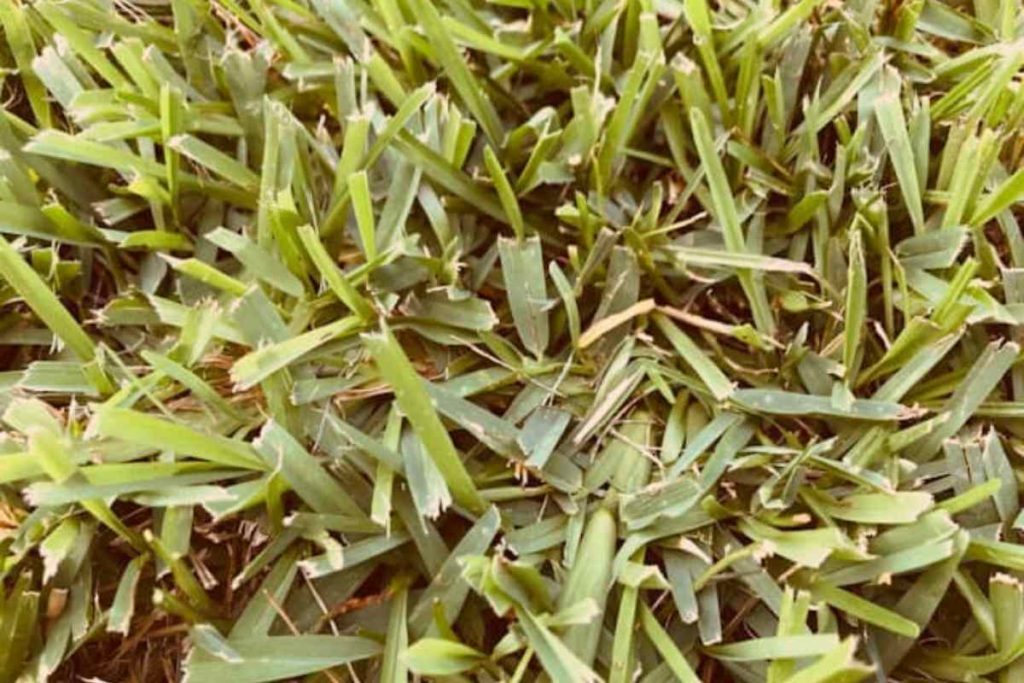
Exposure to high temperatures
St. Augustine grass prefers to grow in regions with a warm climate. It can withstand temperatures ranging from 80°F to 100°F with ease. However, it is difficult to survive the drought, so frequent watering is required.
It is recommended that the daylight hours for St. Augustine grass be around 8 hours. However, if the temperature is extremely high outside, and there is no precipitation in summer, the soil constantly dries out. If there is not enough moisture in the soil, the blades turn yellow.
If high temperatures are observed, the grass can not absorb nutrients from the soil, which are dissolved in water. Because of this, the leaves continue to turn yellow. If the drought continues for a long time, it is difficult for the plant to recover.
How to solve a problem?
It is recommended to constantly lay mulch around the grass. It helps retain moisture, and nutrients sink back into the soil. This is quite useful, given that the roots of the grass are not deep.
It is not necessary to lay the mulch separately. You can mow your lawn using a mulching mower. Do not remove the grass after, but leave it between the plants.
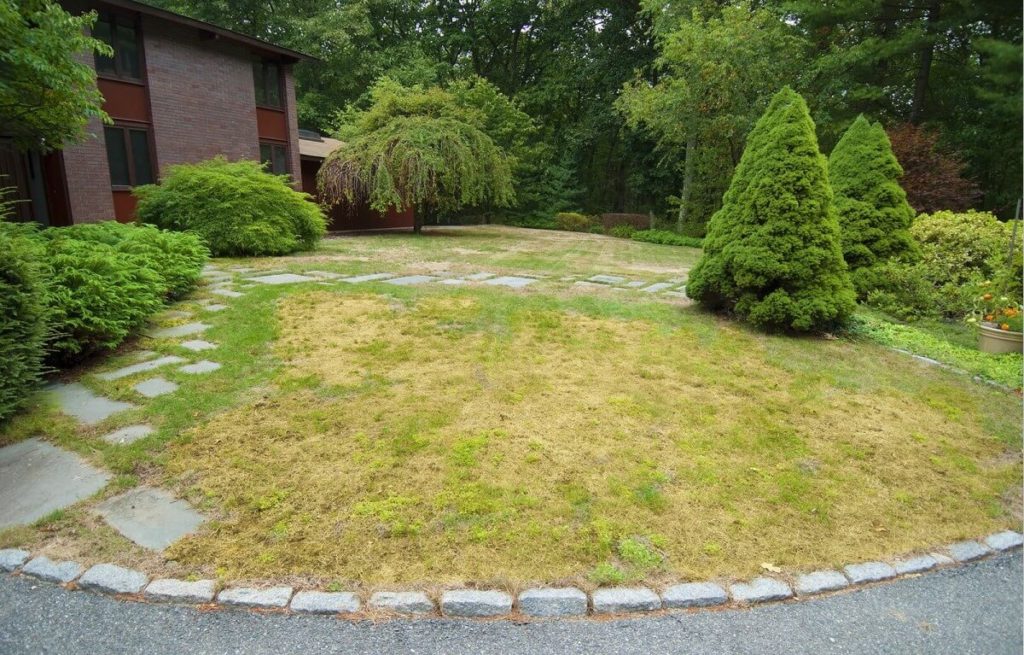
The urine of pets
As you know, pets tend to relieve themselves on grass. The urine of dogs and cats contains chemicals, as well as ammonia. That is why they have a detrimental effect on the grass.
How to solve a problem?
If you notice yellow areas, they need to be dug up. After re-sow the seeds of St. Augustine grass. Do not forget about the need for regular fertilizers and watering. This must be done before the seeds germinate.
An alternative option would be turf, which fills empty areas. Always make sure that the animal does not go to the lawn to relieve himself.
Short lawn mowing
As it grows, St. Augustine grass needs to be mowed. The optimal height is 2-3 inches. If you cut the Augustine lawn too short, your green area is exposed to harsh light.
Therefore, it is more difficult for the leaves to get nutrients. Because of this, they turn yellow.
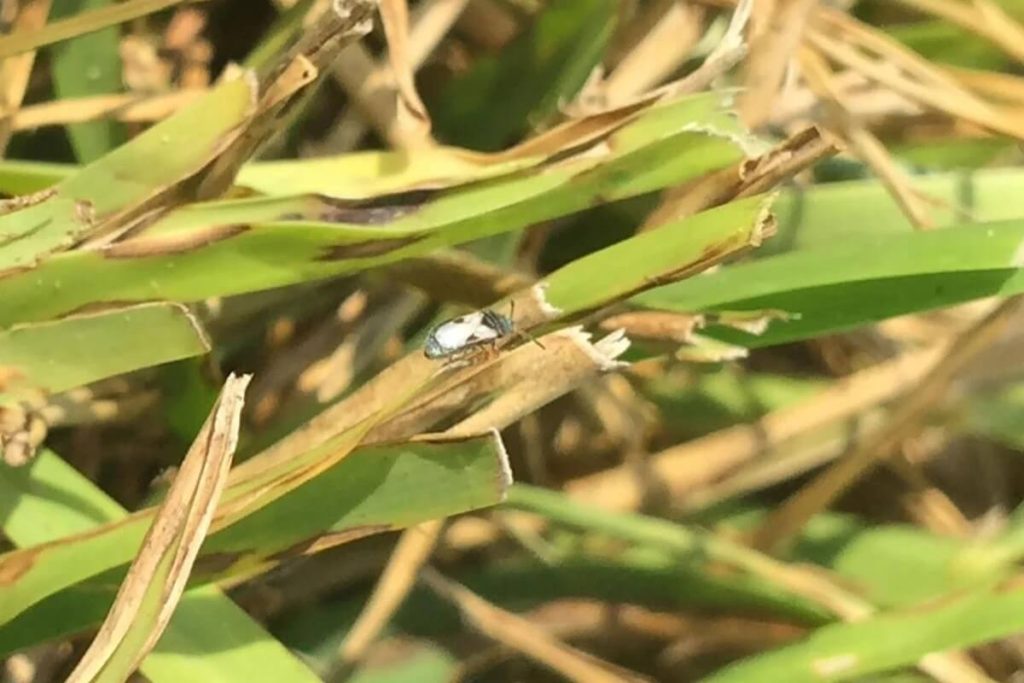
How to solve a problem?
If you cut your lawn short and the grass is turning yellow, you need to feed it. Wait for the grass to grow back. On average, this takes 1-2 weeks. Then try to follow the rules for a haircut.
Conclusion
As you can see, St. Augustine grass can turn yellow for various reasons. First, you need to define it, and then pro
- Why Are There Still No Tomatoes in My Tomato Plants? Let’s Fix the Issue! - July 13, 2023
- Water Propagation White Stuff on Roots: Everything You Should Know! - July 11, 2023
- String of Dolphins Drying Up: Solved! - July 11, 2023

Pingback: Juniper bonsai winter care guide and many helpful tips